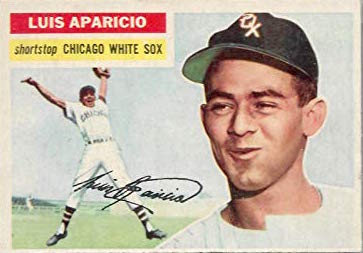Great White North: Jack Brohamer of the White Sox turns shin guards into snow shoes before Toronto’s MLB debut in 1977.
1970
The worst White Sox team in history began their forgettable season by getting pounded 12-0 at home by the Twins. Sox starting pitcher Tommy John only lasted into the fifth inning. The Sox would go on to lose a franchise-record 106 games.
1971
Charlie Finley, the A’s owner, got the first regularly scheduled Opening Day doubleheader in history but was stunned when the White Sox beat them twice, 6-5 and 12-4. Tommy John and Bart Johnson were the winning pitchers. The Sox clubbed five home runs on the day, including a grand slam by Bill Melton. It should have been six homers, except that Carlos May somehow missed touching home plate on his blast. The A’s picked up on it and tagged him out when he was sitting in the dugout.
This was also Harry Caray’s first regular season game as a White Sox announcer, although at the time not a whole lot of folks could hear him. Three straight awful years caused the Sox to lose their radio contract with any mainstream Chicago station. For the next two years Sox games were broadcast on WTAQ (LaGrange) and WEAW (Evanston), two low-powered stations.
1973
On Opening Day in Texas, Mike Andrews became the first White Sox DH. He hit sixth in the lineup for manager Chuck Tanner. He went 1-for-3 in the 3-1 win behind Wilbur Wood.
1977
The White Sox introduced American League baseball to Canada, as they played the first ever game in Toronto Blue Jays history. The Jays outslugged the Sox in a driving snowstorm to win, 9-5. But it was the start of something much bigger; the “South Side Hit Men” were born.
1984
Detroit’s Jack Morris threw what turned out to be the last no-hitter at Comiskey Park, shutting down the White Sox 4-0 on the NBC Saturday “Game of the Week.” The Sox had their chances, including loading the bases on walks in the fourth inning with nobody out.
1993
On his first swing of the season, future Hall-of-Famer Carlton Fisk would blast his final major league home run. It would come off of Minnesota’s Jim Deshaies in the third inning, and was the only run scored by the Sox in a 6-1 loss. Fisk would be released by the Sox in June.
1994
In the annual “Crosstown Classic” charity game between the White Sox and Cubs, Michael Jordan wrote his name into Sox lore. His double in the late innings tied the game and prevented the Sox from losing for the first time in this series. The game would end in a tie. The Sox would go 10-0-2 in the Crosstown Classic series (1985-95, with two games played in 1995).











